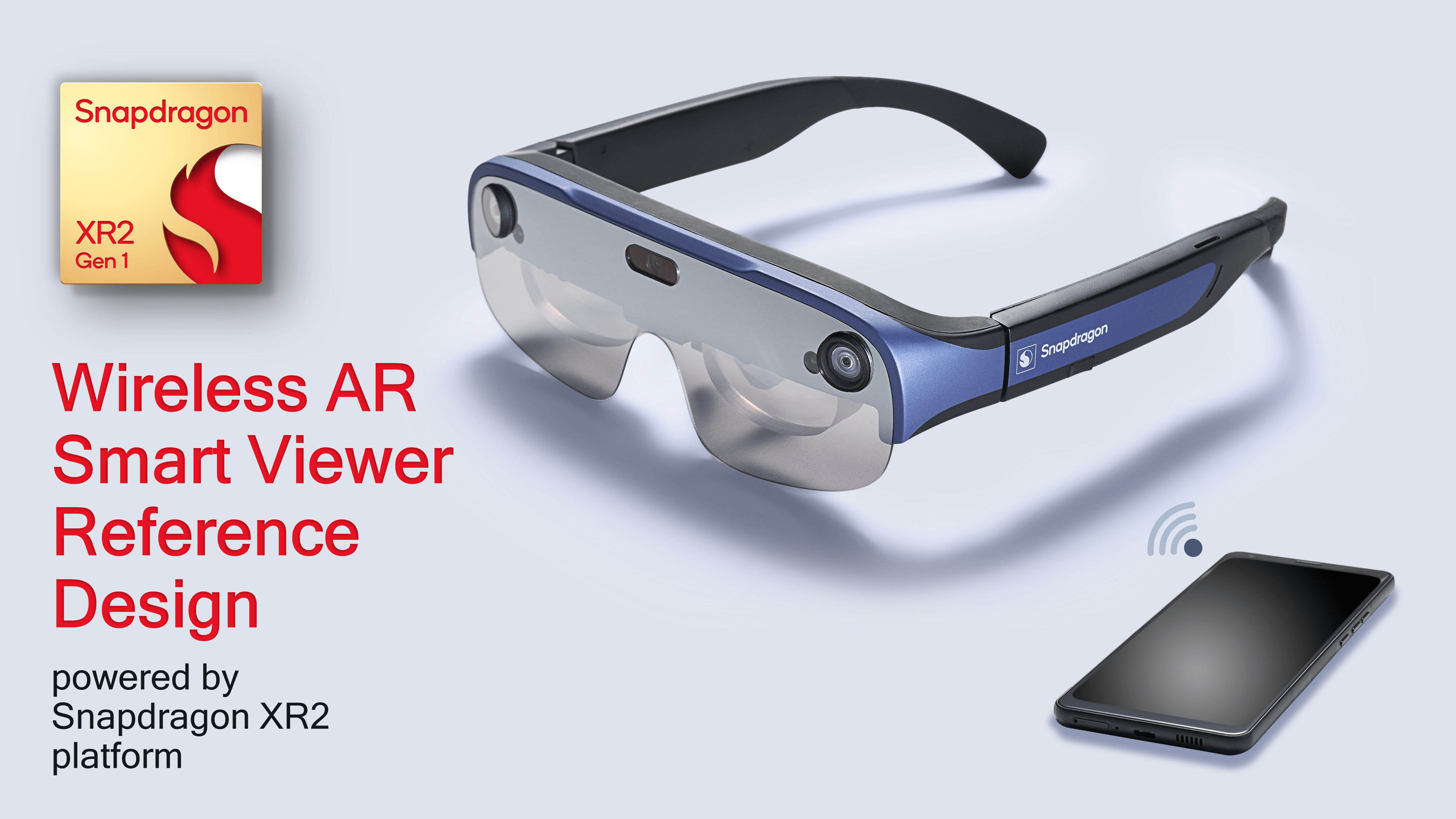Qualcomm has announced the next batch of mobile chips coming to smartphones, tablets, and the AR curious. The company revealed the Snapdragon 8+ Gen 1, a bump up to the current processor used in the latest Android flagships. Qualcomm also took the lid off its newest mid-range processor, the Snapdragon 7 Gen 1. And because it couldn’t be excluded from the dialogue around augmented reality technologies, Qualcomm also introduced the first piece of reference hardware running on its Snapdragon XR2 Platform. It’s a wireless pair of augmented reality glasses.
Qualcomm’s first silicon refresh starts with its flagship-tier chip, the Snapdragon 8+ Gen 1. It has a maximum clock speed of up to 3.2GHz and can handle up to 10 Gbps 5G speeds — if you’re lucky enough to have access to that. It’s also compatible with Wi-Fi 6/6E routers, up to 3.6 Gbps speeds.
Qualcomm is especially emphasising the Snapdragon 8+ Gen 1’s abilities for gaming, adding that the new chip offers “the full suite of Snapdragon Elite Gaming features.” It promises 10% faster speeds and 30% power reduction, so you’re not worried about throttling and battery life while gaming on the go. Qualcomm says the new platform adds up to 60 extra minutes of gameplay.
Something to note is Qualcomm’s focus on its AI engine capabilities. The company says the new 8+ Gen 1 delivers up to 20% better performance for things like AI-infused camera capabilities. In particular, the 8+ Gen 1 can help facilitate simultaneous bokeh effects and face tracking. It also offers 8K HDR video capture capabilities.
Qualcomm says upcoming Android smartphones will feature its latest premium chip, including releases from Motorola, OnePlus, and ASUS, which produces the ROG lineup of gaming-centric smartphones. The Snapdragon 8+ Gen 1 is the successor to the processor inside current Android releases, including the Samsung Galaxy S22 Ultra, Motorola Edge+, and OnePlus 10 Pro. Overseas, the Snapdragon 8 Gen 1 powers up the Xiaomi 12 Pro.

In the mid-range section is the Qualcomm Snapdragon 7 Gen 1. Its spec sheet indicates it’ll offer sincere competition to the latest batch of devices in this particular category.
The 7 Gen 1 is the first of Qualcomm’s mid-range series to convert to the new naming convention, which means it’s the first generation of this new silicon series. Like the flagship 8 Gen 1, the 7 Gen 1 is enhanced by so-called Snapdragon Elite Gaming features, including the Adreno Frame Motion Engine based on its Adreno GPU. This engine helps double up the framerate so that gaming content can upscale without compromising the device’s power efficiency. Qualcomm promises up to 20% faster graphics rendering and better compatibility with Quad HD+ displays.
The new processor will aid in camera performance, too. You’ll be able to shoot simultaneously between three cameras or take photos up to 200-MP, a first for Qualcomm’s Snapdragon 7 series. The chip will also enable 4K HDR recording, which will be a nice boon for mid-range devices that employ this chip series.
Additionally, Qualcomm touts the Snapdragon 7 series 1’s abilities for face detection while wearing a mask. In particular, the 7 Gen 1 will have 30% improved AI performance. As for wireless connectivity, the Snapdragon 7 Gen 1 will have Qualcomm’s X62 5G modem, which supports both mmWave and sub-6 networks.
Qualcomm told us that the pricepoint of devices that would feature the Snapdragon 7 Gen 1 will likely be in the $US400 ($555)-$US600 ($833) range.
Wireless AR Smart Viewer

Since Qualcomm’s business is mainly centered around powering up mobile platforms, it sees the future of augmented reality as being equally untethered. The company used this maelstrom of smartphone silicon news to debut its Wireless AR Smart Viewer, a reference device for developers to build “lag-free” AR experiences on Qualcomm’s FastConnect XR Software Suite.
The reference design explicitly boasts a “40% thinner profile and more balanced weight distribution” compared to Qualcomm’s last generation XR1-powered platform. Goertek, a Chinese OEM, developed the hardware. It features a dual micro-OLED binocular display with a 1920 x 1080 per-eye resolution, each offering framerates of up to 90Hz. There are also dual monochrome cameras and one RGB camera on the Smart Viewer, enabling six degrees of freedom head- and hand-tracking.
The more significant selling point of this particular headset is that it shows the wireless prowess of Qualcomm’s AR platform. The company claims its FastConnect 6900 solution offers “uncompromising” Wi-Fi 6/6E and Bluetooth connectivity so that you don’t have to tether the device while you’re in augmented reality. Qualcomm stays the Smart Viewer will have less than 3ms latency between the headset and the connected smartphone.
Future-facing Qualcomm
Processor updates are par for the course for Qualcomm, and the company has done this sort of mid-year refresh for its flagship silicon before. But the elephant hanging out in the room with these latest announcements is Google, Samsung, and Apple’s respective chips.
Although Apple doesn’t partner with Qualcomm for the iPhone, its pivot toward producing its processors kicked off a movement that slowly reverberated to other notable brands with the infrastructure that could support homemade chips. Google and Samsung come to mind, as the former has teamed up with the latter for the Tensor chip in its Pixel smartphones since the latter already makes Exynos chips for its devices. Google’s been using its chips since the Pixel 6 and recently announced it would stick with it for its mid-range series. And although Samsung hasn’t moved its flagships away from Qualcomm’s hardware yet, the company did opt for its Exynos 1280 processor in its mid-range Galaxy A53 smartphone.
Qualcomm still has plenty of partnerships throughout the global smartphone industry. And while its newest processors offer a glimpse into how it’s proceeding forward to keep parity with the competition, it’ll be interesting to see how it maintains its dominance as Google and Samsung drift off to do their own thing.
